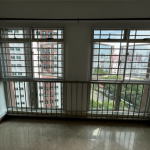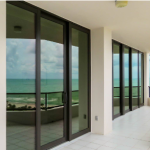Vermiculite fireproofing cement is a critical material used extensively in industrial settings and factories for its superior insulation and fire-resistant properties. However, like all building materials, it can suffer damage over time. This comprehensive post covers the basics of vermiculite to the common causes of its damage and practical repair methods. By understanding these elements, facility managers and maintenance teams can ensure their premises remain safe and compliant with fire safety standards.

Understanding Vermiculite and Its Uses in Fireproofing
What is Vermiculite? Vermiculite is a natural mineral that undergoes significant expansion when heated. This lightweight, fire-resistant, and thermally efficient material is ideal for use in fireproofing applications. When mixed special admixture, it forms vermiculite fireproofing cement, which is applied to structures to enhance fire resistance and reduce noise levels. Most commonly it is using spray method with texture, in some cases with plastering smooth surface too.
Where is Vermiculite Cement Found? Vermiculite fireproofing cement is commonly found in industrial environments and factories where fire resistance is crucial. It is often applied to steel beams and columns, metal ceilings, metal cladding ( in older days) and other structural elements to protect against high temperatures and fire. The use of vermiculite cement is particularly prevalent in areas where structural integrity and fire safety are paramount.
In most of commercial building shopping mall in Singapore, you can see this vermiculite cement in basement car park, in the ceiling of shop unit if the unit is using expose ceiling design.
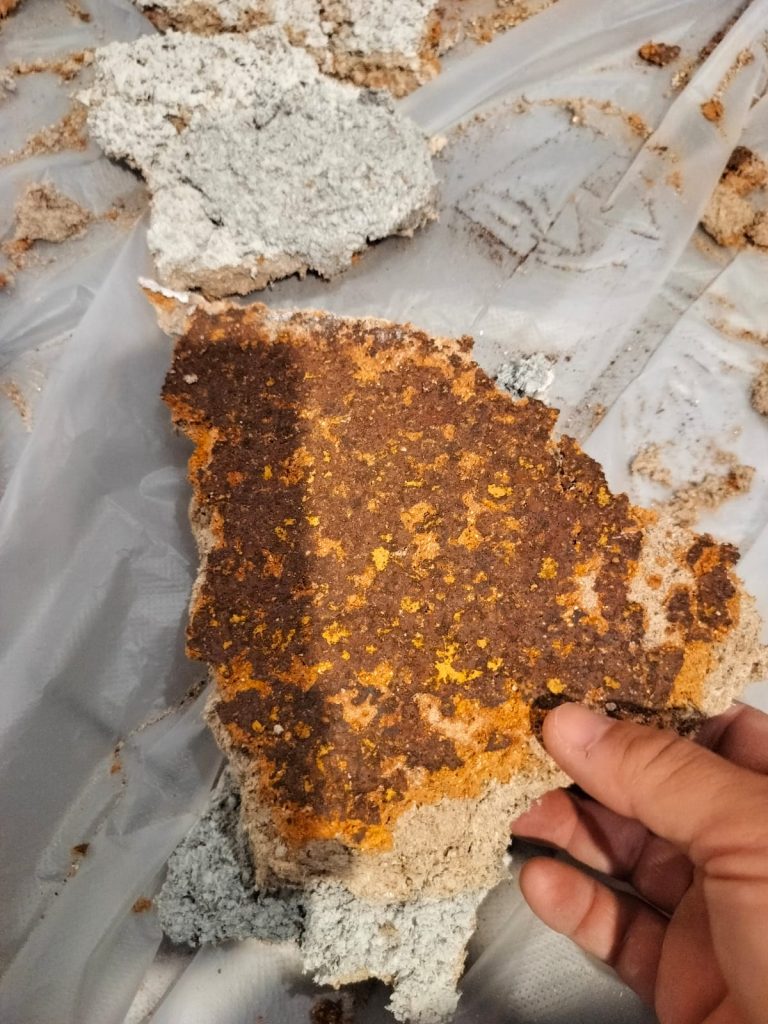
Common Causes of Damage to Vermiculite Fireproofing Cement
- Water Exposure: Water damage is a primary concern for vermiculite cement. Exposure to water, either from leaks, flooding, or high humidity, can compromise the structural integrity and insulative properties of vermiculite fireproofing. Most directly impact due to water seepage issue is causing the metal frame rusty and scaling. With that, the vermiculite cement is de-bonded and drop off.
- Physical Impact: In industrial settings, accidental impacts from machinery or during maintenance work can cause physical damage to areas coated with vermiculite cement. In most cases, due to additional work, the vermiculite is removed to allow for new services, handing new supports or during renovation work.
- Chemical Exposure: Certain chemicals can react with vermiculite cement, leading to degradation. This is especially relevant in factories where chemical spills might occur. The environment of the space if there is high contains of chemical, it will damage the vermiculite too.
- Age-Related Wear and Tear: Over time, vermiculite cement can naturally degrade due to environmental factors and the stress of continuous exposure to industrial conditions.
Methods for Repairing Damaged Vermiculite Fireproofing Cement
Continuous maintenance and repairing vermiculite fireproofing cement is essential to maintain its fire resistance capabilities and structural integrity. In most cases, initial and early repair is essential to pro-long the life span of your properties.
Here’s how to address the common damage scenarios:
Water Damage Repair
- Assessment and Removal of Water Source: Before any repair work can begin, identify and eliminate the source of moisture to prevent further damage. Fix the leaks before repair the surface with new vermiculite cement.
- Drying and Cleaning: Thoroughly dry the affected area. This might involve mechanical ventilation or dehumidifiers.
- Removal and Replacement: Severely water-damaged vermiculite cement should be removed and replaced to ensure the continued effectiveness of the fireproofing.
Repairing Physical Damage
- Patch and Repair: Small areas of damage can often be patched using new vermiculite cement. Ensure that the new material bonds well with the old by properly preparing the surface.
- Complete Replacement: For extensive damage, removing the damaged section and reapplying new vermiculite fireproofing cement may be necessary.
Addressing Chemical Exposure
- Neutralization: First, neutralize any chemical contaminants present on the vermiculite cement to prevent further damage.
- Surface Preparation and Repair: Clean the area thoroughly before applying new vermiculite cement to ensure good adhesion between the old and new materials. It may need to install others additional protection to prevent the surface of vermiculite to contact with chemical exposure.
Dealing with Age-Related Degradation
- Regular Inspections and Maintenance: Regularly inspect vermiculite fireproofing cement for signs of wear and tear. Early detection can prevent the need for extensive repairs.
- Partial or Complete Replacement: Depending on the extent of the degradation, partial or complete replacement of the vermiculite cement may be necessary to ensure maximum protection and performance.
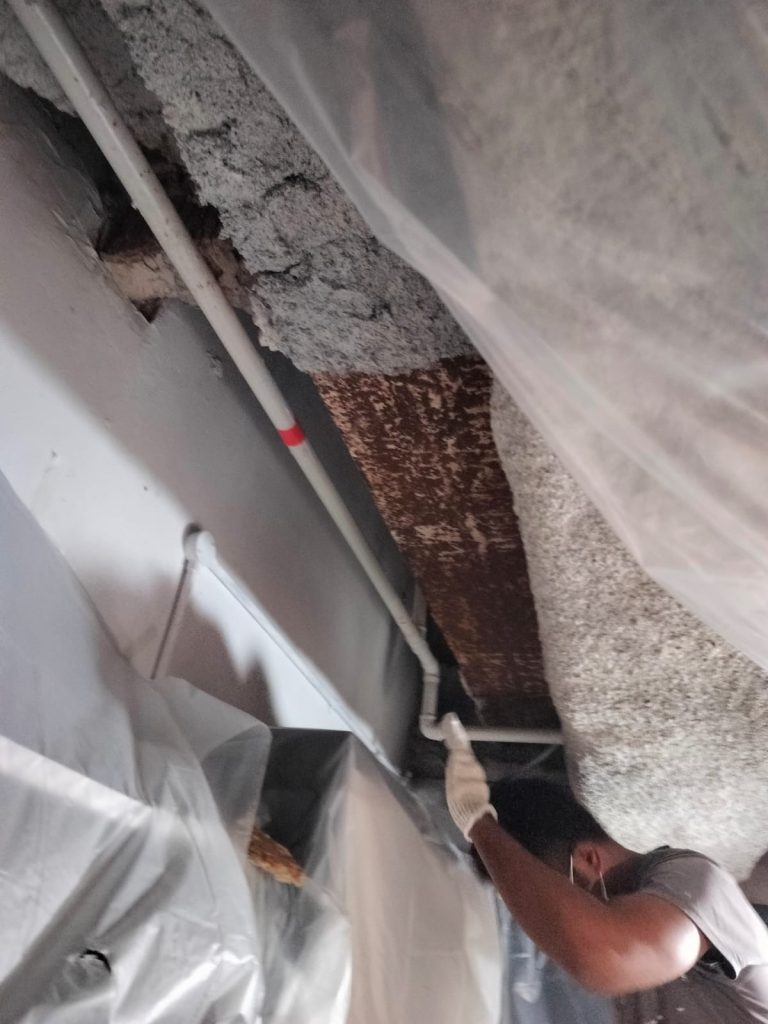
Precautions When Repairing Vermiculite Fireproofing Cement
- Safety First: Always wear appropriate personal protective equipment (PPE) when handling vermiculite cement, especially if there is potential asbestos contamination in older installations. Use of scaffolding or scissor lifts to reach the working area, if required.
- Proper Ventilation: Ensure adequate ventilation when working with vermiculite cement to avoid inhaling any dust or chemical fumes.
- Adherence to Regulations: Comply with all local safety and building codes ( MOM and SCDF) and regulations when performing repairs to ensure that the fireproofing continues to meet legal safety standards.
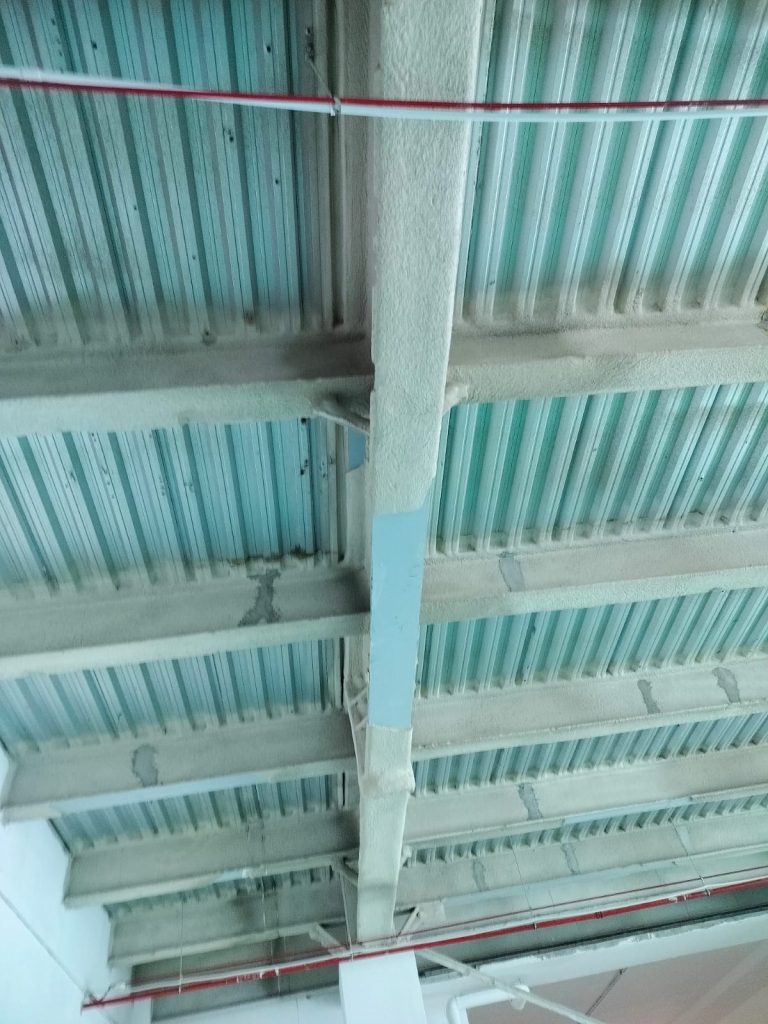
When to Seek Professional Help
As the fireproofing vermiculite is only available by the applicator, the most repair work will need to approach your local specialist, this is not to mention significant damage or complex situations should be addressed by professionals. Specialized fireproofing contractors have the expertise and equipment to safely and effectively repair or replace damaged vermiculite fireproofing cement. The technical know-how and warranty of the work ( eg. such as COC & DOC ) is equally important.
Contact 9reno for repair and reinstatement of the fireproofing vermiculite cement for your building.
Conclusion
Understanding the function and maintenance of vermiculite fireproofing cement is crucial for those responsible for the safety of industrial and factory settings. By following the outlined steps for assessing damage and performing necessary repairs, you can ensure that your fireproofing measures are always at peak performance. Remember, proactive maintenance and timely repairs are key to long-term safety and compliance in any industrial environment. For more tips and guidance on maintaining your facility’s safety standards, stay connected with our blog.





